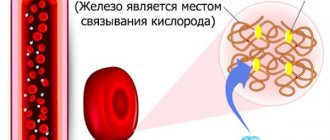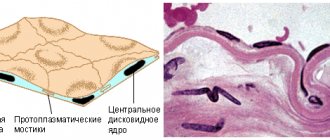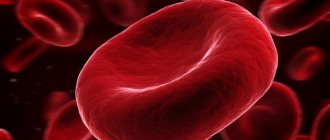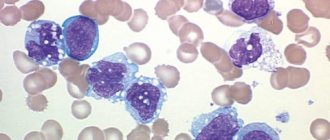Microalbuminuria (MAU) is the excretion of albumin in the urine in an amount of 30-300 mg per day. At the Yusupov Hospital, all conditions have been created for the treatment of patients who have been diagnosed with albuminuria:
- Chambers with European level of comfort;
- Use of modern expert-class diagnostic equipment, which allows you to quickly and accurately determine the cause of albuminuria;
- Treatment of diseases manifested by albuminuria using the latest drugs that are highly effective and have a minimal range of side effects;
- Attentive attitude of medical staff to the wishes of patients.
Severe cases of diseases, one of the symptoms of which is microalbuminuria, are discussed at a meeting of the Expert Council with the participation of professors, doctors of medical sciences, and doctors of the highest category. Depending on the cause of albuminuria, cardiologists, nephrologists, endocrinologists and other specialists are involved in the treatment of patients.
Microalbuminuria is an early sign of renal dysfunction and is one of the manifestations of target organ damage (an indicator of impaired endothelial function, insulin resistance and increased blood clotting - hypercoagulation). Diagnosis of microalbuminuria is carried out using special strips. They come in different sensitivities. If the result is positive, the presence of microalbuminuria is confirmed using quantitative methods.
Indications for prescribing a urine test for microalbuminuria
Doctors at the Yusupov Hospital prescribe a urine test for microalbuminuria (MAU) for the following purposes:
- Screening for the initial stages of renal glomerular dysfunction (nephropathy, as a complication of hypertension, diabetes, atherosclerosis);
- Diagnosis of kidney and cardiovascular diseases;
- Monitoring the condition of the kidneys in diseases in which the kidneys may be involved in the pathological process (diabetes mellitus, hypertension, cardiovascular diseases);
- Monitoring therapy for arterial hypertension.
Microalbuminuria is a marker for assessing the risk of kidney pathology and cardiovascular diseases. A urine test for UIA is prescribed to patients suffering from glomerulonephritis, arterial hypertension, and sarcoidosis. The level of albumin in urine may increase with fructose intolerance and hypothermia. Microalbuminuria is determined in pregnant women who are at risk of developing nephropathy.
Method of determination
Pathological albuminuria is not detected by routine methods of urine examination, for example, by acid precipitation.
Given the significant daily variability in urinary albumin excretion, only the detection of MAU in two or three consecutive urine tests is diagnostically significant.
For a urine screening test for UIA, it is permissible to use specially designed test strips, but in case of a positive test using rapid tests, it is necessary to confirm pathological albuminuria using methods that allow determining the albumin concentration.
Semi-quantitative assessment is carried out using special strips - strip tests, where there are 6 gradations of albumin concentration in urine (“not detected”, “traces” - up to 150 mg/l, more than 300 mg/l, 1000 mg/l, 2000 mg/l). l, and more than 2 thousand mg/l). The sensitivity of this method is about 90%.
Quantitative determination is carried out using:
- 1Determination of the ratio of creatinine and albumin (C/A) in urine;
- 2Direct immunoturbidimetric method. The method allows you to estimate the albumin concentration by the turbidity of the solution obtained after the interaction of the protein with specific antibodies and the precipitation of immune complexes.
- 3Immunochemical method using the “HemoCue” system (immunochemical reactions using anti-human antibodies). Albumin-antibody complexes lead to the formation of a precipitate, which is subsequently captured by a photometer.
How to get tested for microalbuminuria
On the eve of the study, the patient is advised to avoid alcohol, salty and spicy foods, and foods that change the color of urine (beets, carrots). Before collecting urine, you should thoroughly clean the external genitalia. Men toilet the external genitalia after retracting the foreskin and exposing the head of the penis. Women are not recommended to test urine for microalbuminuria during menstruation. Before collecting urine, it is advisable to insert a gynecological tampon into the vagina.
For patients with incontinence, urine is collected using a catheter. In infants, a thorough toilet of the external genitalia is carried out, and urine is collected in a urinal. Urine squeezed out of a diaper cannot be examined.
Urine must be collected in a clean, dry glass or plastic container, well washed from cleaning agents and disinfectants, or a sterile disposable urine container. After collecting urine, the container is tightly closed with a lid, placed in a clean disposable bag and delivered to the laboratory center of the Yusupov Hospital.
How to collect material for research?
Collecting urine for research does not require prior preparation.
Rules for collecting material:
- 1Urine collection occurs over a full day (from 08.00 on the first day to 08.00 on the second day), the very first portion of urine must be poured into the toilet.
- 2All urine excreted over 24 hours is collected in a single container (sterile). During the day, the container should be kept in a cool place in the absence of sunlight.
- 3The daily amount of urine must be measured and the result recorded on the issued research referral form.
- 4After this, the urine is mixed (this is necessary, since the protein can settle at the bottom of the jar!) and poured into a sterile container in a volume of about 100 ml.
- 5The container is delivered to the laboratory as soon as possible.
- 6There is no need to send all urine collected per day to the laboratory.
- 7Since the release of albumin depends on height and weight, these parameters MUST be recorded on the issued direction. Without them, urine will not be accepted for examination.
Interpretation of urine test results for UIA
Albumin excretion in urine may increase with dehydration, heavy physical activity, or following a high-protein diet. Microalbuminuria is determined in patients suffering from diseases that occur with an increase in body temperature, inflammatory processes of the urinary tract (cystitis, urethritis).
A decrease in the level of albumin in urine occurs in the following diseases:
- Dysmetabolic, reflux, radiation nephropathy;
- Pyelonephritis;
- Early stage of glomerulonephritis;
- Renal vein thrombosis;
- Polycystic kidney disease;
- Nephropathy in pregnant women;
- Systemic lupus erythematosus (lupus nephritis);
- Amyloidosis of the kidneys;
- Multiple myeloma.
Urinary albumin excretion decreases with excess hydration, a low protein diet, taking angiotensin-converting enzyme inhibitors (enalapril, captopril), non-steroidal anti-inflammatory drugs, and hypothermia.
How does Scheuermann-Mau disease occur in children?
The occurrence of Scheuermann-Mau osteochondropathy in children is associated with a period of active growth. Lack of vitamins, phosphorus and calcium leads to decreased mineralization and bone density. In children, these mechanisms lead to early osteoporosis.
The pathogenesis of degenerative-dystrophic changes is influenced by improper or insufficient development of the muscle fibers of the back. An insufficient muscular frame provokes a change in posture. During this period, the child's spine and vertebrae are most susceptible to traumatic injury.
Physical manifestations of microalbuminuria
A patient with a high content of albumin in the urine goes through several stages of disease development. In the asymptomatic stage, the patient does not complain, but microalbuminuria is detected in the urine. At the initial stage of the disease there are also no complaints, but the glomerular filtration rate increases. Microalbuminuria does not exceed 30 mg per day.
The prenephrotic stage is characterized by an increase in the level of microalbumin in the urine to 300 mg. The patient's blood pressure increases and the renal filtration rate increases. Complaints associated with increased blood pressure (headache, nausea, and sometimes vomiting) appear. During the nephrotic stage of the disease, blood pressure increases, it is poorly controlled by taking antihypertensive drugs, and edema appears. The urine test results show a significant increase in the amount of protein and the presence of red blood cells. Glomerular filtration decreases, creatinine and urea levels increase.
The stage of renal failure is characterized by frequent increases in blood pressure. The swelling becomes persistent, and the number of red blood cells in the urine increases. The filtration rate decreases significantly, the concentration of protein in the urine increases along with creatinine and urea.
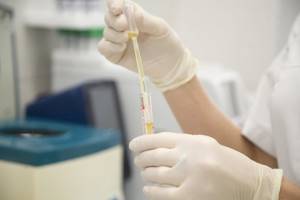
Prevention of UIA
In order to prevent damage to kidney tissue, several rules must be followed:
- 1Systematic monitoring of fasting glucose - normal levels are 3.5 - 6.0 mmol/l.
- 2Daily monitoring of blood pressure, which should not exceed 130/80 mmHg.
- 3Quarterly monitoring of lipid profile indicators - with high levels of cholesterol and triglycerides, not only the formation of atherosclerotic plaques occurs, but also damage to kidney tissue;
- 4Completely stop smoking and nicotine analogue cigarettes. Nicotine is dangerous for all blood vessels in the human body, including the kidney vessels. The risk of developing proteinuria in smokers is approximately 21 times higher than in non-smokers.
Video Photo Tables

Clinical significance of microalbuminuria
Microalbuminuria is the most important early sign of kidney damage, which reflects the initial stages of vascular pathology (endothelial dysfunction, atherosclerosis). It is consistently correlated with increased cardiovascular disease incidence and mortality. Dissertations and articles devoted to the problem of microalbuminuria indicate that even a slight increase in the excretion of albumin in the urine is associated with a significant increase in the risk of cardiovascular events, including fatal ones. A progressive increase in MAU indicates deterioration of vascular health and causes an additional increase in risk. In this regard, microalbuminuria is recognized as an independent cardiovascular risk factor and the earliest sign of target organ damage (kidneys).
MAU is a consequence of increased loss of albumin from blood plasma through the endothelium and is defined as a marker for the development of systemic disorders of endothelial function. Endothelial dysfunction is characteristic of the early stages of atherosclerosis and is directly associated with increased cardiovascular risk.
Scientists have found that increased urinary protein excretion is clearly associated with left ventricular hypertrophy, regardless of age, race, gender, blood pressure, smoking, diabetes, smoking, or blood creatinine levels. MAU is especially often detected in heart failure and arterial hypertension. Microalbuminuria develops in 10-40% of patients with type 1 diabetes mellitus and in 15-40% of patients with type 2 diabetes mellitus. The frequency of detection of microalbuminuria increases with the duration of the disease in both types of diabetes mellitus.
In order to get tested for microalbuminuria, call the contact center of the Yusupov Hospital. After the examination, doctors will treat the disease that caused the increase in protein in the urine.
What to do if microalbuminuria is detected?
If, apart from microalbuminuria, no other pathology of internal organs has been identified, then it is advisable to conduct additional diagnostics to exclude diabetes mellitus and hypertension.
For this, 24-hour blood pressure monitoring and a glucose tolerance test are required.
In patients with MAU and previously diagnosed diabetes mellitus and/or hypertension, the following laboratory criteria must be achieved:
- 1Cholesterol<4.5 mmol/l;
- 2Triglycerides (TG) up to 1.7 mmol/l;
- 3Glycated hemoglobin up to 6.5%;
- 4Systolic pressure <130 mmHg.
This helps reduce mortality from cardiovascular complications by 50%. In patients with type 1 diabetes, the indicators are slightly different and are:
- 1Glycated hemoglobin <8.0%;
- 2Blood pressure <115/75 mmHg;
- 3Cholesterol up to 5.1 mmol/l;
- 4Triglycerides up to 1.6 mmol/l.
Why does Scheuermann-Mau disease develop in adults?
In adult patients, Scheuermann-Mau disease is a consequence of:
- cervical myelopathy;
- osteoporosis;
- intervertebral hernial protrusions;
- deforming spondylosis;
- spondyloarthrosis.
As a rule, the first signs of pathology appear at 30-40 years of age. Chronic myelopathy is manifested by impaired functionality of the spinal cord, resulting in changes in muscle tone and disruption of the functioning of internal organs.
As a result, deformities of the vertebral bodies in the corresponding part of the spine, spondylodysplasia, are detected. Stenosis of the intervertebral foramina is associated with the formation of osteophytes and the deposition of calcium salts along the anterior longitudinal ligament. The radicular vascular system is significantly affected. Multiple kinks and occlusions of blood vessels lead to disruption of trophic processes in the vertebrae.
Diagnosis of Scheuermann-Mau spinal disease
The diagnosis of Scheuermann-Mau disease is approached comprehensively, since it is often combined with other diseases of the spine - scoliosis, Schmorl's hernia, spondylolysis. The examination program includes:
- X-ray of the spine;
- MRI;
- electromyography;
- electroneurography;
- General and biochemical blood test.
If an infectious origin of the disease is suspected, a blood test is taken for sterility and a culture of the cerebrospinal fluid is performed.
Characteristic signs of Scheuermann-Mau deformity on x-rays:
- Severe hyperkyphosis exceeding 40°.
- Wedge-shaped change in the anterior surface of the vertebral body at the level of 5°.
In some cases, consultation with a geneticist, oncologist, or vertebrologist is required.

